My Dog Ate a Grape: What To Do

Table of Contents
Listen To The Article
Introduction to My Dog Ate a Grape: What To Do
It is now well established that ingesting grapes or raisins is a common cause of kidney failure in dogs, the phenomenon has only been recognized over the last three decades.
Undoubtedly, there were many cases prior to this, but improved record-keeping and computerization of animal medical records allow for collation and documentation of the problem.
Dogs will eat just about anything you give them especially if it’s something you’re eating too.
It’s tempting to offer them little tidbits.
That’s rarely a good idea, and it’s a very bad idea if the food is grapes.
Grapes and all products that are made from grapes are toxic to dogs. Raisins, currants, and sultanas are dried grapes.
Products like grape juice or trail mix with raisins can lead to grape poisoning in your dog.
Unfortunately, even organic, pesticide-free, and homegrown grapes are also toxic.
Science doesn’t yet know precisely what makes grapes so deadly to dogs.
Research has shown that the toxic agent is apparently in the grape itself.
That means that seedless or peeled grapes are not safe.
Grape poisoning affects different dogs differently.
One grape can be deadly for some dogs, and other dogs can eat a dozen with no ill effects.
The size, breed, age, or health of the dog are not factors in which dogs are affected or the seriousness of the symptoms.

Why Are Grapes Poisonous To Dogs?
It’s true that it only takes 32 grams of grapes per kilogram (dog’s weight) for kidney injury to occur in dogs.
As for raisins, the amount ranges from 11 to 30 grams per kilogram.
Although the exact cause of grape or raisin toxicity is unknown, it’s believed that the fleshy part of the grape is what’s toxic.
Additionally, it’s good to keep in mind that both peeled and seedless grapes are toxic and should never be used as treats.
Because these animals often have kidney failure, and the cause of kidney disease is usually very difficult to establish clinically, many historical cases would have been recorded as a renal failure of unknown origin.
Unfortunately, we are still not entirely sure what substance within the fruit is toxic to dogs, but toxicity is likely due to the toxins produced by fungus or just on the skin, rather than the grape itself.
These mycotoxins then cause the death of tubular cells in the drainage system of the kidneys and lead to more severe illness.
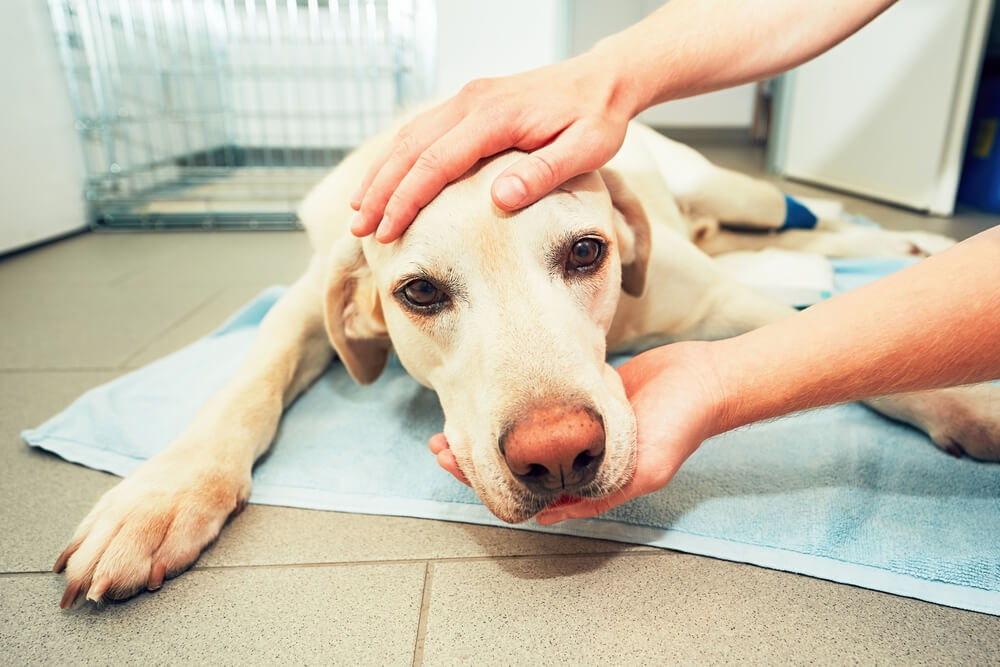
What Is The Toxic Dose?
The number of grapes needed to produce signs of illness will probably vary depending on the amount of fungal growth found on the fruit.
Because raisins are essentially concentrated grapes, it takes far fewer of them to cause problems.
Although other sources estimate that it can take about 10 grapes per kilogram of body weight, I have a colleague that recently dealt with a fatal poisoning in an adult Labrador that had eaten only one small child’s packet of raisins.
My own Labrador puppy developed signs of mild renal insufficiency, requiring intensive treatment after eating approximately 15–20 grapes, which would have equated to about one grape per kilogram.
I would always urge caution when dealing with a dog known to have definitely eaten any amount of the fruit.
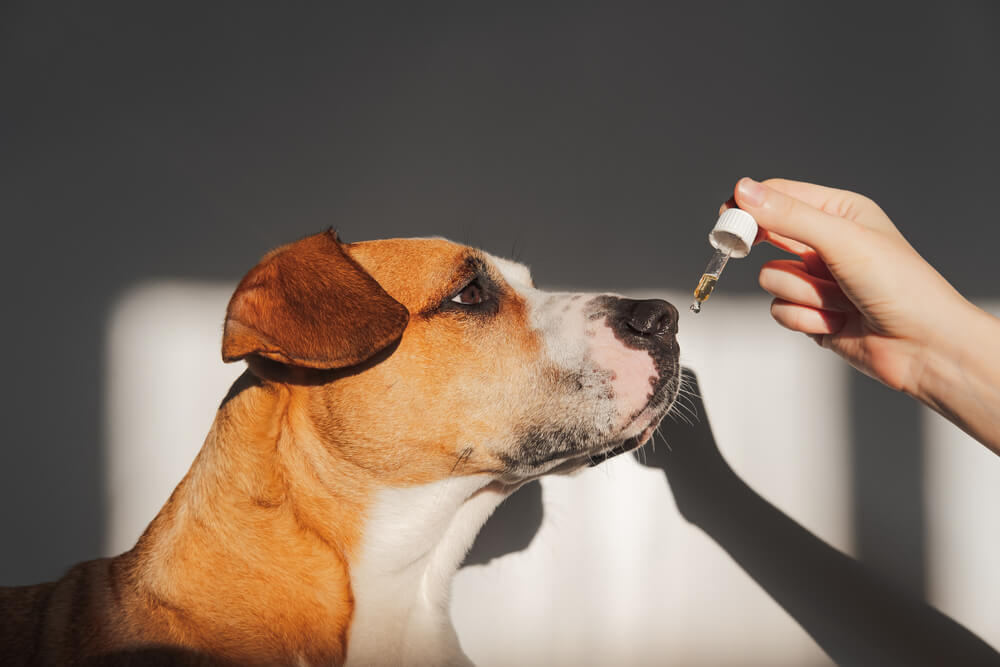
What Are the Symptoms of Grape Poisoning?

What to Do if Your Dog Has Grape Poisoning?
You will need to take your dog to an emergency veterinarian if it’s after hours.
The diagnosis will be based on symptoms and the history of your dog’s exposure to grapes.
If your dog has eaten grapes or raisins in the past two hours you will need to induce vomiting.
That said, vomiting is best induced within 15 to 20 minutes after your dog has eaten either grapes or raisins, regardless of how many grapes eaten.
Your veterinarian will then administer activated charcoal to absorb toxins. In addition, vomiting should not be induced in dogs that have lost consciousness or are having trouble breathing.
Dogs that show signs of a shock need to be taken to the emergency veterinarian right away.
That said, dogs that have already vomited will still need to be taken to the emergency veterinarian for treatment.
Nonetheless, if your dog has eaten a large amount of either grapes or raisins, or if he or she is already vomiting or has diarrhea, your veterinarian will administer fluids for 48 hours to increase urine output.
Your dog will also be put on medications to stimulate increased urine production.
Yet, if your dog is not producing any urine, survival is not likely at this stage.
Your veterinarian will then discuss other options with you.
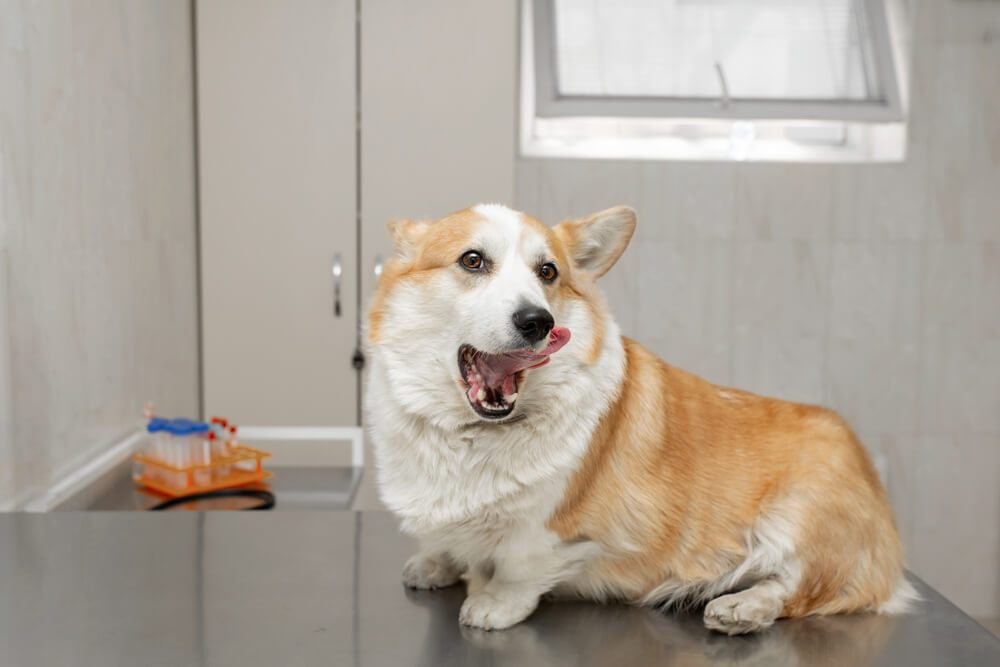
Can Grape Poisoning Be Treated?
Yes!
However, as with most poisonings, time is of the essence.
If you can bring your dog to your veterinarian within two hours of ingestion, then they can induce vomiting to prevent some or all of the toxins from being absorbed.
Feeding the dog activated charcoal or other protectants can also help prevent absorption in the early stages.
Further treatment in later stages involves supporting kidney function with intravenous fluids and electrolyte supplementation.
If a large number of toxins have been eaten, then more intensive measures may include blood pressure monitoring and manipulation, as high blood pressure is a common complication with severe renal damage after grape poisoning. Dialysis or kidney transplantation is sometimes necessary to ensure a good outcome.
Ultimately, the prognosis for a dog that has eaten grapes depends on two things: how long has passed before treatment is initiated, and how many grapes or raisins were ingested.
Not all animals that eat a few grapes will show signs of serious illness, but many will, and you should always seek veterinary attention immediately if you suspect or know that your pet has been poisoned,
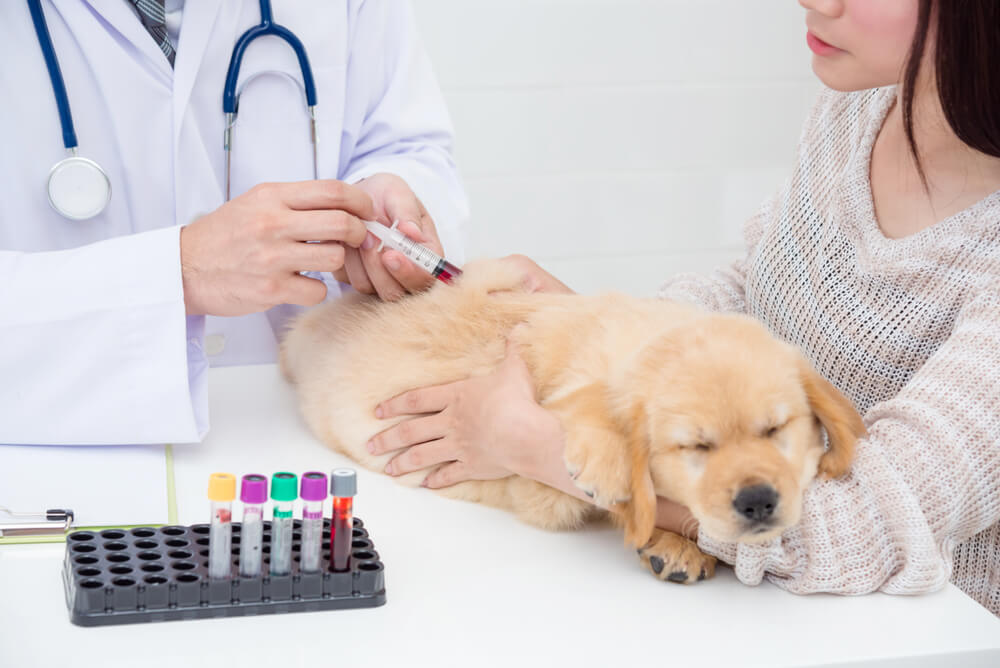
Immediate Treatment If Your Dog Has
Vomited Already
If you’ve called your veterinarian because your dog has already vomited after eating grapes or raisins, your veterinarian may recommend you to stay at home and do the following:
Make up a small meal for your dog
Administer 3% or 1 milliliter (ml) peroxide per pound of your dog’s weight by using a syringe or teaspoon with the maximum amount being 45 ml.
That said, you cannot give a dog, regardless of weight, more than 45 ml of peroxide.
Squirt the 3% peroxide into the back of your dog’s mouth using a syringe.
If your dog does not vomit within 15 minutes of the peroxide administration, veterinarians advise trying this out again with the same amount capped always at 45 ml, even if your dog weighs more than 45 pounds.
It’s important to note that this method can only be used twice and that your dog should be taken to an emergency veterinarian for treatment, and a check-up afterward.
Your veterinarian may do a gastric lavage, and/ or administer activated charcoal to absorb the grape and raisin toxins.
Follow-up treatment is necessary to protect your dog’s kidneys.
Always follow up on all appointments, and keep a close eye on your dog while he or she is recovering at home.
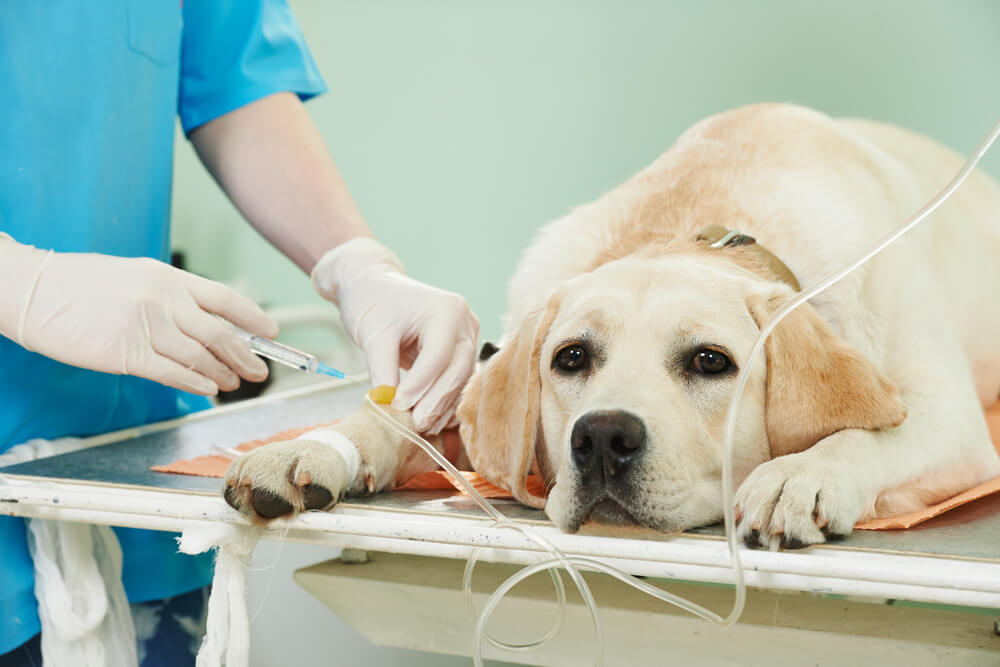
Treatment
Treatment via an emergency veterinarian is always necessary to ensure that your dog has not been harmed by grape toxins.
Usually, after making a dog vomit, your veterinarian may wash out your dog’s stomach via a gastric lavage and then proceed with the administration of activated charcoal, to absorb any remaining toxins from the grapes or raisins.
Intravenous fluid therapy is usually the next step so that the toxins are flushed out of the dog’s bloodstream.
This also helps to promote kidney function and produce urine.
Your dog will also receive medications to reduce vomiting, and help to keep kidney function going.
All the while your veterinarian will be monitoring your dog’s kidney function, by doing lots of blood work.
Each and every hour at the veterinarian is crucial to your dog’s survival, even if your dog has vomited at home.
Along with all the above-mentioned treatments, hemodialysis may be needed to help your dog until his or her kidneys start functioning again. Kidney transplants may be needed in some cases, with some pet parents opting for euthanasia if their dog’s kidneys have shut down.
If the worst happens, get help right away.
Chances are you’ll be saving your dog’s life! While there’s no guarantee as to a complete recovery, your veterinarian will do his or her best for a full recovery.
In many ways, feeding dogs healthy foods is similar to feeding children.
You’re going to need to watch out and make sure that your dog is getting a high-quality dog food formula with plenty of veggies and fruits.
That said, research or consult with your veterinarian as to what you can add to your dog’s diet.



